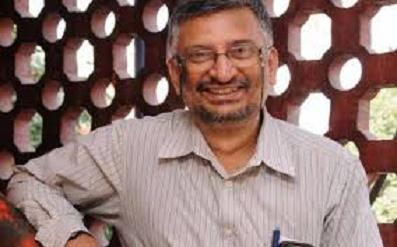'Once is chance, twice is coincidence, third time is a pattern' is not always correct. If in a roll of dice, six comes thrice in a row, we think either the dice is loaded or the person is cheating or that in the next row, the odds of getting six are pretty low. Called gambler's fallacy or Monte Carlo fallacy, it is a misguided belief based on one basic premise. In a game of chance, like cards or roll of dice, if a certain outcome has not occurred in a while, it is more likely to occur in the future. If we had faced ‘bad luck’ in a row, surely the ‘good luck’ is due shortly. But, in reality things do not happen that way.
Randomness is both a beauty and a beast. It is bewitching but hard to catch. It has an intuitive property like the law of averages. Yet it has non-intuitive property of clustering. If we get three heads in a row, we assume that the chance of getting fourth head is somehow lesser and we bet on tail. However, the chance of head or tail, irrespective of how many heads or tails have occurred previously is always half. Although there is this law of averages, wherein over a large number of tosses the number of heads and tails would be almost equal, it is not true that if we have three heads in a row the chances for the fourth toss to be head is less.
Things happen, sometime for a reason, but not always. But, this is not something that is easy to stomach, says Prof. Mustansir Barma, Professor Emeritus at the TIFR Centre for Interdisciplinary Sciences in Hyderabad, which is a centre of the Tata Institute of Fundamental Research.
When we say someone is a ‘random person,' we often just mean he or she is a ‘previously unknown’ person. However, randomness is not a product of ignorance or lack of acquaintance. Carbon 14, for instance, is a naturally occurring radioactive isotope. Just give it time, ‘pop’ would come an electron and it would turn itself into Nitrogen-14. How long should we wait for the change to happen? This is a trick question.
If we have to answer for say 1,000 carbon 14 atoms, we can for sure say that in 5,730 years (plus or minus 40 years), 500 of them would turn into Nitrogen 14. In another 5,730 years, 250 more atoms would turn into Nitrogen 14 and so on and so forth. This we can say because we know Carbon 14 has half life of 5,730 years plus or minus 40 years. However, it would be difficult to say when would a particular atom decay into Nitrogen 14. It is a matter of ‘randomness.'
“Randomness has nothing to do with whether you have knowledge about something or not. It is something that you cannot predict in advance. Toss a coin. You won’t know which way it would go. Head or tail? This is a good example of randomness,” says Prof Barma.
Prof. Mustansir Barma, Emeritus Professor, TIFR-TCIS, Hyderabad.
"Things happen, sometime for a reason, but not always. But, this is not something that is easy to stomach”, says Prof. Mustansir Barma
“Intuitively we assume that all natural processes are deterministic. We are wrong. Most phenomena are best modelled as ‘random,' like a dust particle floating on a liquid surface. The dice has no memory, and the odds for head or tail remains the same. The outcome is random,” adds Prof Barma.
He, however, emphasised that though natural processes are complex, erratic and random, it does not mean one has to remain in complete ignorance. “In 1906 Einstein theoretically showed that a quantitative measure of random Brownian motion would lead to the determination of the Avogadro number. Physicist Jean Baptiste Perrin later actually measured the random movement of microscopic particles suspended in a liquid or gas and came up with an estimate of Avogadro's number in 1909. Today this number plays a crucial role in chemistry. Randomness can be studied, and we can gather some insights”.
An important aspect of randomness is that it comes with clusters. Imagine holding a handkerchief and moving it around. We can see `valleys’ and `mountains’ being formed on the surface. Soon valleys turn into hills and hills into valleys. Let’s drop some pepper flakes randomly on the handkerchief and watch how they move. As you flutter the handkerchief, the pepper flakes would roll towards the valleys. As the valleys become mountain and mountain become valleys, they would randomly move here and there. What happens after you flutter for a long time? Curiously we would find the pepper flakes form a cluster.
Prof. Barma is also interested in studying the phenomenon of clustering. He has several reasons for doing so. “Think of pollutants in the air. They are constantly buffeted by air currents. Random forces act on them. Over a period, we may find time pollutants clustering. The spread of contagious diseases may also have such an effect, and they have large implications for epidemiological studies and designing public health strategies. Under what circumstances this sort of clustering can happen is still an open question” he says.
In statistical modelling, average is an important property. They tell us about the system. However the deviation from the average or fluctuations, tell us about how the system behaves. “The study of fluctuation has led us to understand many phenomena and, in particular, biological phenomena at the cellular level. In one recent example, Prof Madan Rao of National Centre for Biological Sciences has shown how the actin cytoskeleton of the cell membrane fluctuates making the cell membrane move and leading to the clustering of multivalent proteins such as glycans at the cell surface, very similar to the handkerchief with pepper flakes” says Prof. Barma.
Prof. Barma’s current interest is to study the emergent collective effects when many ‘Random Walkers’ begin to interact with each other. For instance, put a pot of water on a stove. Each of the molecules in the water, like pollen dust on water, is in Brownian motion. Slowly and steadily the temperature increases and suddenly the whole liquid starts boiling and the intramolecular distance between all the water molecules would have increased fourteen times, in unison, precisely, at the same temperature. In the same way, take a permanent magnet and heat it. It would retain its magnetic property up to a particular temperature called Curie temperature. After that it would lose its magnetism completely. Fill a funnel with sand. Pour water. The water will speculate down the tube. Shake and pack the sand a bit. Still, water will percolate. At a given point suddenly all the percolation stops and it becomes non-porous. Why does it happen this way?
Such dramatic alterations in physical properties are called phase transitions, and physicists love studying them. “Phase transition is a collective effect. How such collective phenomena occur is still a mystery, I am intrigued by these fascinating, strange area” says Prof Barma.
Prof Barma obtained his Bachelor's degree from St Xavier College, University of Bombay and his Ph.D. from State University of New York at Stony Brook. He did postdoctoral work at the Michigan State University in the US. He joined TIFR, Mumbai in 1976 and has worked on phase transitions, disordered systems, and non-equilibrium dynamics. Former director and Distinguished Professor at TIFR Mumbai, he was involved in the establishment of the new campus of TIFR at Hyderabad. He was conferred the Padma Shri in 2013. (India Science Wire)






